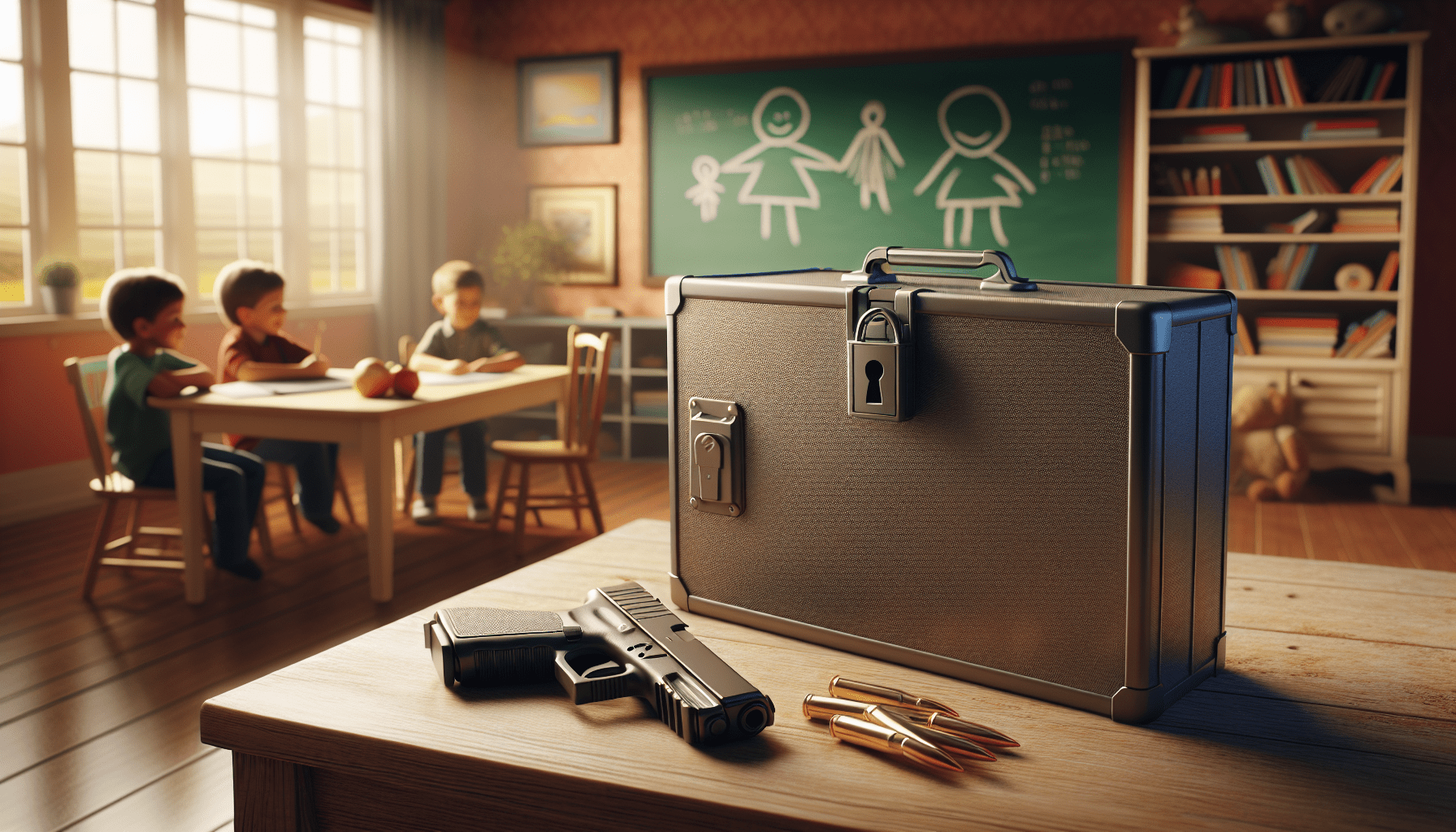Have you ever wondered how to effectively teach children about gun safety in a way that is both educational and engaging? Educating children about proper gun handling is an important aspect of growing up in environments where firearms are present. Approaching this topic with care and clarity is essential to ensure safety and understanding.
Understanding the Importance of Gun Safety Education
Understanding why gun safety education is crucial can set the groundwork for teaching children effectively. Firearms are part of many households, and knowing how to handle them safely can prevent unnecessary accidents. By introducing your child to the topic, you are promoting responsible behavior and awareness from a young age.
Why Gun Safety Matters
Gun safety is about more than just preventing accidents; it’s about instilling a sense of responsibility and respect for the tools that protect and provide. Whether or not you own a gun, educating children about their potential risks and how to respond appropriately can be life-saving. This education helps children make informed decisions and act correctly in situations involving firearms.
Starting the Conversation
So, how do you bring up such a critical topic with children? Start by assessing their maturity and understanding. Use simple language and clear explanations. Ensure that your child feels comfortable asking questions. Keeping the dialogue open encourages curiosity and learning.
Teaching the Basics of Gun Safety
Introducing children to the basics of gun safety can begin with a few foundational rules. These principles are crucial and can set the stage for deeper understanding as they grow.
The Core Rules of Gun Safety
-
Always treat every gun as if it’s loaded.
This rule teaches respect for the firearm and ensures cautious handling at all times. By assuming a gun is loaded, your child learns to handle it with care. -
Never point the gun at anything you don’t intend to shoot.
This rule emphasizes awareness of the gun’s direction even if loaded or not. Teaching this helps instill a sense of responsibility for what’s around them. -
Keep your finger off the trigger until ready to shoot.
This prevents accidental discharge. By teaching this, you reinforce the idea that the trigger should not be engaged unless the intention is clear and deliberate. -
Know what’s beyond your target.
Awareness of the surroundings is vital. Teaching this combines environmental awareness with firearm responsibility.
Practice Makes Perfect with Simulations
Consider engaging your children in virtual shooting experiences. They can practice safe handling in a controlled environment, making it a valuable step before actual handling.
Involving Children in Educational Experiences
Hands-on experiences and simulations can reinforce what children learn about gun safety. Using a mix of real-world and virtual tools helps bridge the gap between theory and practice.
Educational Visits to Gun Ranges
Taking a trip to a local gun range offers an educational experience. Children can see how stakeholders prioritize safety in a real-world setting. Consider establishments like Green Line Arms in Pensacola, Florida, where experts can guide your discussions about safety practices.
Table: Key Benefits of Visiting a Gun Range
| Benefit | Description |
|---|---|
| Real-World Application | Children see safety measures in action. |
| Guided Experience | Professionals provide insights and reinforce learning. |
| Hands-On Practice | Children can practice handling under supervision. |
| Enhanced Understanding | Observing safe environments fosters deeper comprehension. |
Learning from Experts
Gaining insights from professionals offers authoritative knowledge that can add weight to your teachings. Green Line Arms, for example, showcases the importance of responsible gun handling and offers a comprehensive perspective on safety.
Reinforcing Knowledge with Discussions
Regular discussions about gun safety help reinforce previous lessons. Family meetings can include safety talks that encourage children to share their thoughts and understanding.
Engaging in Regular Safety Talks
These discussions can be casual yet informative. Ask your children questions like, “What would you do if you found a gun?” This encourages them to think critically about how they might react and fosters confidence in their understanding.
Exploring “What-If” Scenarios
“What-if” scenarios allow children to mentally practice responding to different situations involving firearms. Role-playing these scenarios under supervision can enhance their readiness.
Promoting a Culture of Responsibility
Fostering a culture where safety and responsibility are paramount ensures children grow up with the right mindset toward firearms.
Encouraging Non-Use
Teaching children that it’s okay not to handle a gun, even when allowed, empowers them to make choices aligned with their comfort levels. Understanding their boundaries is an important part of responsible gun ownership.
Recognizing the Long-Term Impact
The lessons learned in childhood often extend into adulthood, forming the basis of lifelong habits and attitudes towards firearms. As parents and educators, instilling this sense of responsibility ensures children grow into adults who respect and understand firearms.
Addressing Questions and Concerns
Children are naturally curious, and they might have many questions about guns and gun safety. Providing honest, open answers helps assuage fears and builds trust.
Encouraging Curiosity
Support healthy curiosity by encouraging questions. Every question a child asks is an opportunity to deepen their understanding and dispel myths or misinformation.
Building Confidence
Giving children the facts empowers them. With accurate information, they’re less likely to make mistakes or act out of fear. Make sure they feel confident about what they know and how to act around firearms.
Conclusion
Teaching children proper gun handling requires patience, understanding, and clarity. Always prioritize safety, and remember that creating an open dialogue is key to effective learning. For hands-on practice and professional guidance, consider visiting places like Green Line Arms for tailored experiences. Emphasize the importance of respect and responsibility, and your child will carry these values into adulthood.




